Today’s letter is free because it’s presented by Dorsey.
Good morning everyone, we made it to Friday and November. In today’s newsletter, we have an interview with Dorsey’s Meg Strachan where she answers your questions about building a modern diamond business. Plus, a dispatch from the Lower East Side’s newest bar (that officially opens tonight), and J.Crew’s creative team hired Sam Youkilis for a recent social media campaign in Italy.
GUEST LECTURE: Meg Strachan
This interview is part of a Feed Me feature called Guest Lecture. In this series, I introduce you all to an expert who I’m curious about, and give readers an opportunity to submit questions to them.
Meg Strachan is the founder and CEO of Dorsey, a jewelry brand that focuses on lab-grown stones and diamonds. Meg started Dorsey in 2020. At the time, she couldn’t find any investors – but it was a tale as old as time, she was ahead of the curve. Lab-grown diamonds now represent over 17% of the overall diamond market.
In today’s Guest Lecture, Meg answers your questions about what people get wrong when building a team, why she believes Substack is the future of fashion marketing, and when she decided to stop talking about how hard it is to build a business.
“What were you doing before launching Dorsey? How was the transition from that role to starting a business?” - Gabrielle
I’ve spent the past 18 years at the intersection of growth marketing and brand for well-funded DTC companies in executive roles. What that actually means is that my career has been in building brands and bringing them to customers. I used to be hired by executives and boards to lead customer acquisition in channels that included email, Facebook, text message, and social. I lived through the heyday of DTC, when founders were able to raise millions of dollars to acquire customers through Facebook and Instagram. I’ve worked for the companies with ping pong tables, Kombucha on tap, cafes, and big fancy offices. Some of those companies are out of business now.
When it comes to DTC, I feel like I’ve seen it all: I’ve seen how budgets are spent, the importance of financial excellence, how investors impact companies, and how founders are sometimes pushed to hit growth figures that are irresponsible and short sighted. In terms of the DTC rise and fall, I’ve been relatively roughed up by it. For better or worse, I’ve dedicated my adult life to this side of the industry.
“As women we read about how hard it is to fundraise, but it feels very different to actually experience it. I was embarrassed that I couldn’t raise any money.”
When I started Dorsey I was still the Vice President of Marketing for a high-growth brand. While I was working full time, I went out to raise money in 2019 but I wasn’t successful. I met with some great funds. They thought the addressable lab-grown market was too small. It's now projected to be almost $50 billion by 2030. The truth is that I thought I’d be able to fundraise based on my career experience. That wasn’t the case. As women we read about how hard it is to fundraise, but it feels very different to actually experience it. I was embarrassed that I couldn’t raise any money.
With no other road, I decided to move forward and bootstrap the business. The next five years were the hardest five years of my life (career-wise).
So it’s been quite the transition to being my own boss. I’ve never had more responsibility and it’s not a light experience. But I wouldn’t trade the last 5 years for anything. It was worth it.
A few years ago my Uncle Ted told me to stop talking about how hard it is to build a company because it’s just how it works. He started a steel company 40 years ago.
I decided he was right so I've tried not to bring it up since. The best advice I’ve gotten about building a business has come from people who have built their own companies over 30+ years.
They’ve seen it all.
“What do you think people get wrong about hiring and scaling a team?” - Austin
I think companies sometimes hire too many high-paid executives and not enough employees who want to jump into the weeds and execute (particularly when scaling). This is especially true in marketing departments right now. You need employees who understand the media landscape, how much it's changed, and who want to roll up their sleeves and learn a new trade. Marketing is completely different than it was 5 years ago. I think you also need employees who are willing to come to terms with the fact that all industries have experienced radical changes since 2020 and you need teams who can accept that sobering fact and lean into learning the new tools.
As a company grows of course you need executive leadership. But when I think back on my career, I see now that I sat in many expensive meetings where not much got done because the wrong people were in the room (big ideas people not executors). I also think it’s important to promote from within. It’s easy to think that a new person can come into your business and create seismic change, and that certainly can happen, but most of the time leveraging the team members who have spent the most time with you and in the weeds of a business is going to create a better outcome. Lastly, there’s always a risk when you hire too fast.
“What do you think is the most significant way to get a marketing engine started with very little cash to burn?” - Dylan
Right now, affiliate marketing. I think marketing engines start with awareness. Creators and influencers are how most people learn about brands and companies now.
“For Women of a Certain Age, how are you convincing me to turn to lab diamonds, especially if I am looking at them as a future heirloom? Or is lab strictly the province of a younger client?” - Pam
The future customer of lab grown likely owns both. The lab grown market is growing at such a rapid pace that consumers are mostly educating themselves and coming to their own conclusions. Lab grown stones are certainly heirloom pieces. I don’t know that we are trying to convince anyone to become a lab grown customer. It feels more fluid than that. Consumers are being presented with both options and they’re largely choosing lab grown themselves based on quality, price, and design.
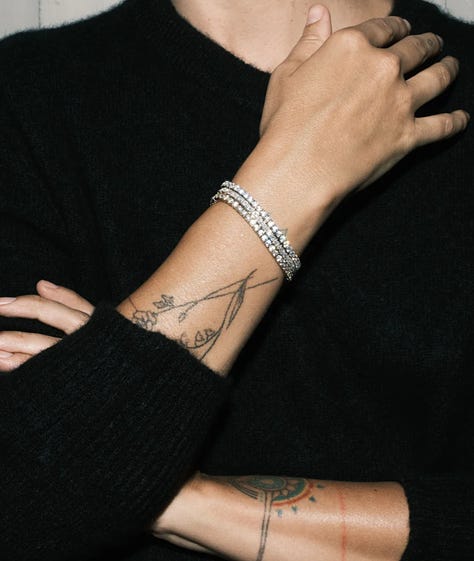
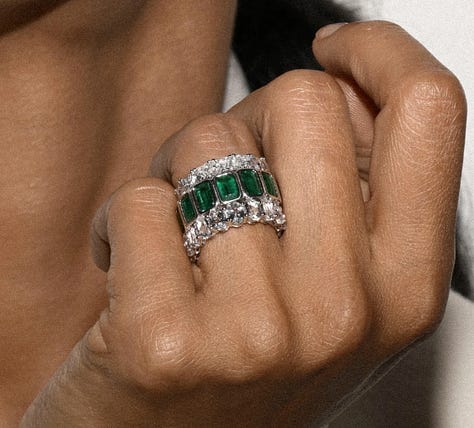

“When you were starting Dorsey how did you decide what to focus on for your first product offerings? Did you design the jewelry yourself?” - Sarah
The most disruptive companies are generally started by industry outsiders. I’m an industry outsider, too. I have no background in jewelry and no background in jewelry design. I was a consumer who didn’t understand why a company like Dorsey didn’t exist. We work with our own designers and have since the inception of the brand. The diamond industry is very closed door. It’s mostly run by men.
I had no idea how hard it would be to break into it and most people in the industry thought my ideas were bad. I asked them to execute on them anyways.
We were the first company to offer lab sapphires in sterling silver. I thought it was a great idea. Our initial production partners told me it was horrible.
So we’re a company that believes in testing horrible ideas that we think our customers might love. It’s core to who we are and it’s always served us well.
The consumer data is really clear. Lab grown is the future of jewelry, and we’re very excited to be at the front of it.
“How much has the business evolved from your original idea for the brand? How do you balance your initial vision with being open to shifts in direction?” - Laura
For the past five years we have executed on the original direction for the brand and, in many ways, it hasn’t shifted. In the next 5 years we’re going to be evolving across categories but the ultimate goal remains the same.
When people think of lab grown jewelry, whether they are wearing one of our pieces or not, we want them to think of Dorsey.
“Do you have any predictions on the future of shopping and fashion-focused newsletters?” - Emily
I joined Substack two years ago for two reasons. First, when I post links on Instagram stories they expire in 24 hours and I wanted a place to insert a link that would live forever. Next, I wanted to understand Substack. I wanted to see how quickly you can build a community. I wanted to understand open and click-through rates and I wanted to connect with my own community in a space that wasn’t Instagram. As a woman, I wanted to talk to the women who were following me. As a marketer, I think it’s important to understand how things work on a pretty molecular level.
The only media competing with engagement and conversions on Substack right now is Instagram stories and Meta ads.
I think most fashion companies don’t understand Substack because people on their teams don’t use it personally. The data is wild (from open rates to clicks on links and direct conversions). That’s really frustrating for writers here who have dedicated communities they’ve worked hard to build. It is infinitely more valuable to land in someone’s email inbox than on their feed. Think about it this way, when a company goes out of business sometimes the only thing they can sell is their email list.
“Substack is fashion's most important new platform.”
Meta uses creators and influencers to sell millions of dollars of advertising space by leveraging the free content that influencers post every single day.
Substack allows influencers and creators to own their audience.
It’s changed the game in a substantial way because Meta missed on Instagram shopping and affiliate. Substack is fashion's most important new platform. But as a platform, I hope they can offer some new tools and consider changing their fee requirements. I’m concerned it’s falling behind.
I don’t see people as Substack writers, or Substack publications, or Substack creators. Just like I don’t see Dorsey as a Shopify brand.
That’s the next phase. When everyone drops the Substack title and we’re simply speaking to fashion publications built on Substack. That’s when we’ve entered a new fashion media landscape. I hope it’s soon.
Read more Guest Lectures:
If we had a water cooler, I’d talk to you about:
The teams behind Doubles in Amagansett and Casino on Canal Street opened a new spot in Two Bridges. I texted my friend Pir, who went to the opening night, about the scene:
“Bar Oliver is as beautiful as it is delicious. I’ve never been to San Sebastián but guess I don’t need to go anymore because no way it eclipses what they’re doing in this kitchen. I went for the friends and family on Wednesday and immediately called Aisa (co-owner) to book quite literally 48 hours later and repeat my meal. Aisa, Dan, Evan, Jonas, KJ… a dream team of good taste coming together.” - Pir Granoff, Anchovy Enthusiast
I was always confused why Metrograph’s editorial content was hidden away on their website. So it makes me happy that they’re going to begin printing a magazine. I forgot how much I like their burger but I haven’t had it in a while… maybe this month.
Speaking of print’s resurgence, Amanda Mull joined Lauren Sherman this morning on Fashion People to discuss the comeback of print. They also talked about David Bars.
Sarah Spellings interviewed Richard Christiansen about Flamingo Estate’s new book for WSJ. I want to know which hotel “south of Central Park” he was staying in during this interview…
“We know the millennial core answers to this God shaped hole. It's ‘Soul Cycle’ and the like. But we can't reach God pedaling and not going anywhere.”
’s Hereticon talk is awesome.
I think I was one of Futuredew’s few fans. The Glossier glowy serum is now available in the form of a solid stick. Great for holiday makeup looks.
The GQ staff is so sexy. Fun column.
Sam Youkilis and J.Crew is a storytelling collaboration from heaven. J.Crew’s marketing and creative teams are having so much fun this year!





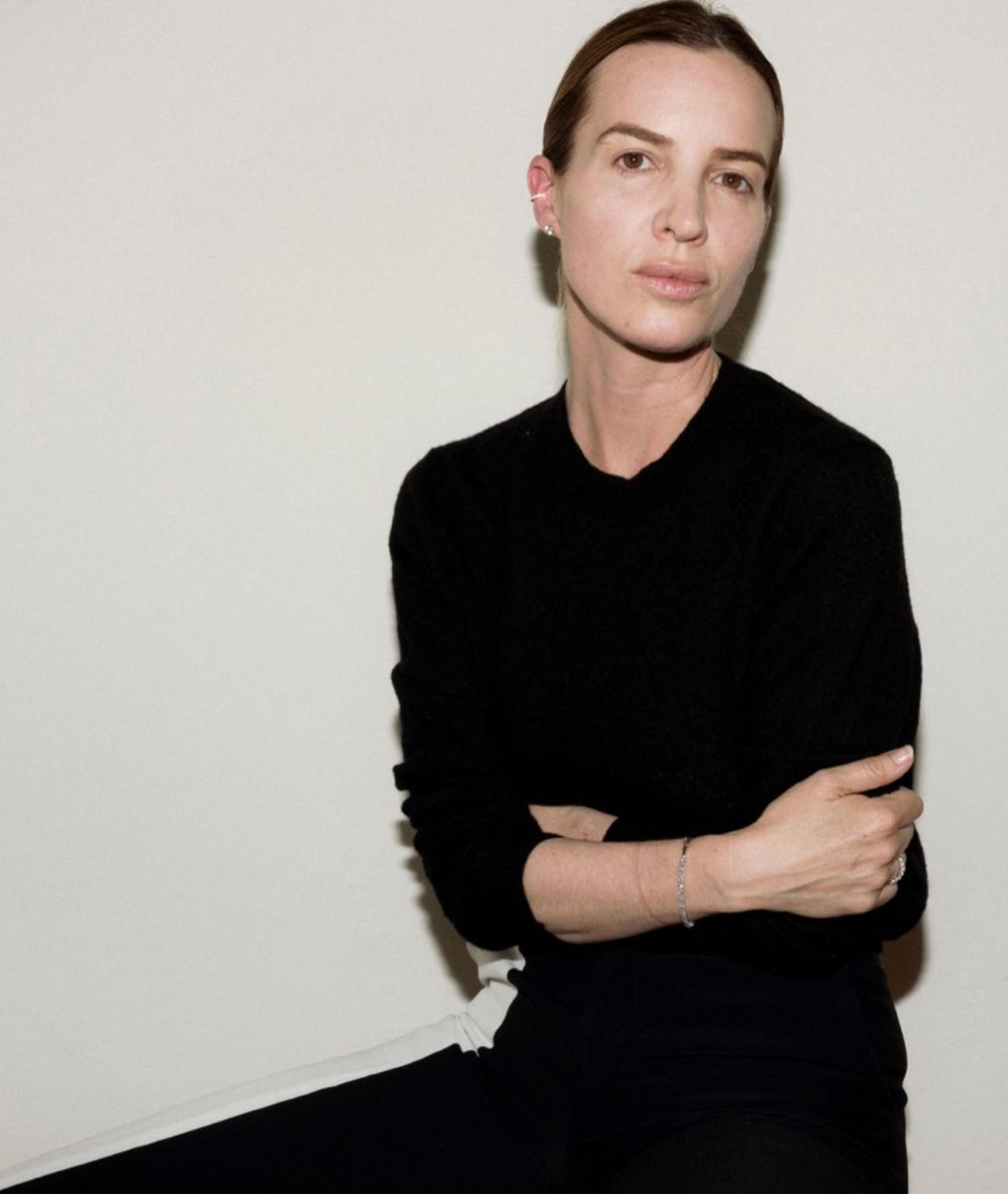
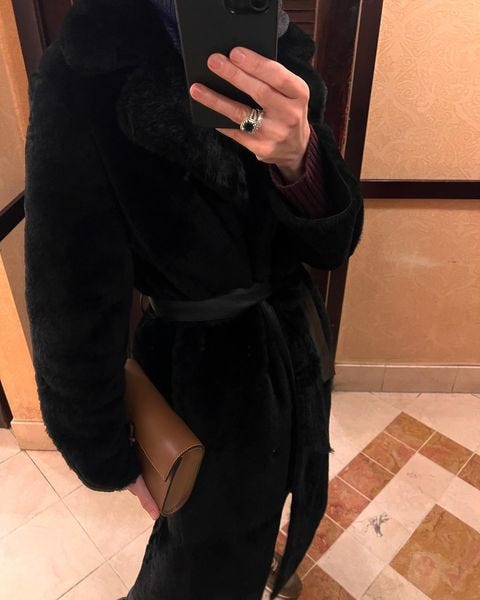
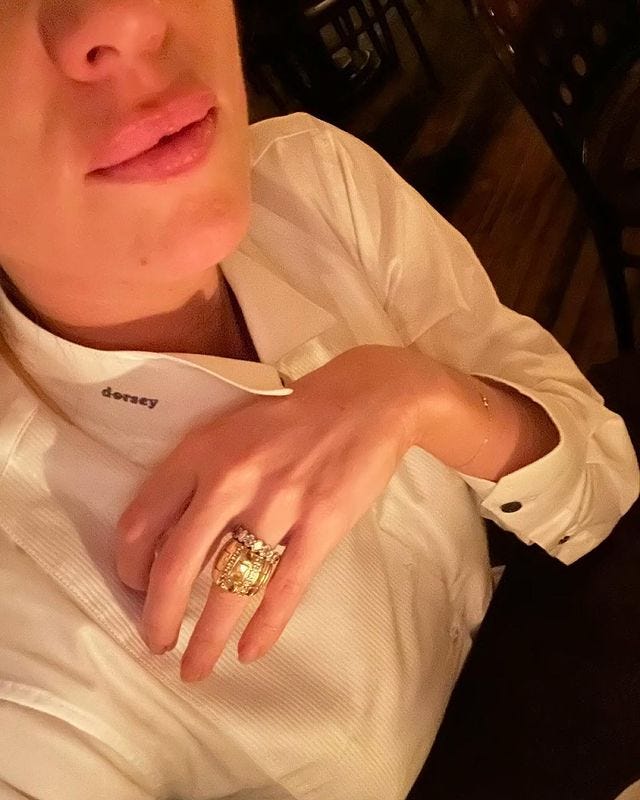




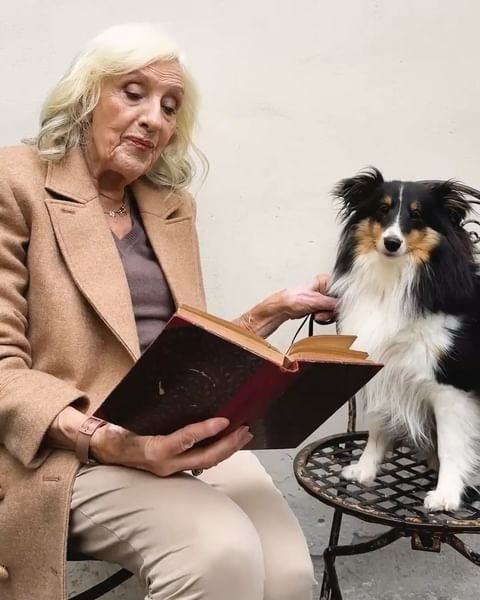
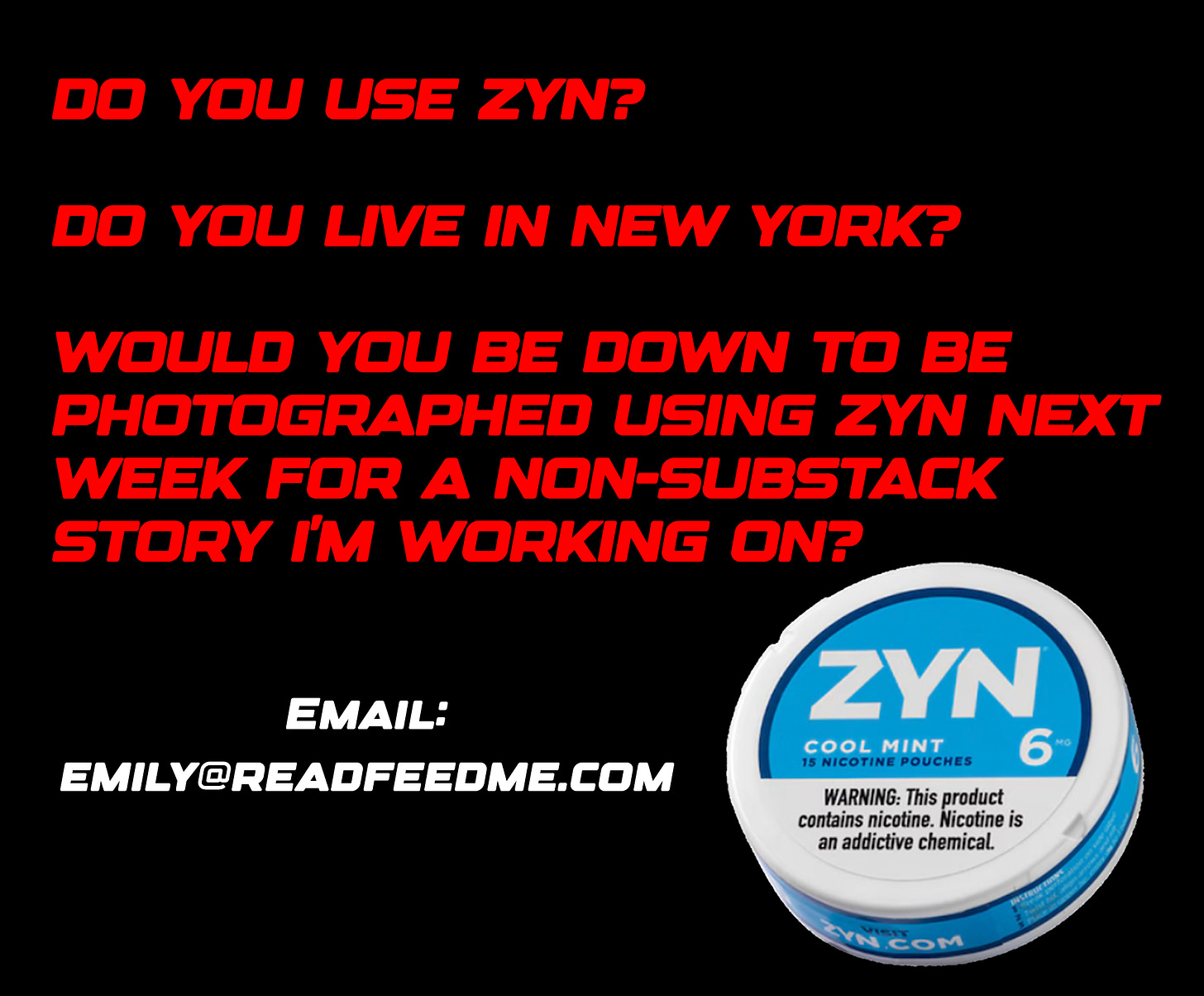
I appreciate Meg’s transparency in answering the question about converting "women of a certain age" into lab diamond customers and this product being seen as a future heirloom.
Meg's is an approach the industry could use more of when it comes to lab-grown vs. natural diamonds. I also love that she isn’t trying to convince anyone, even though I have a slightly different view on lab-grown stones as heirlooms. To me, whether lab-grown can be considered an heirloom depends on one’s definition: if it’s something sentimental, then yes, it certainly can be. But if an heirloom is something that holds intrinsic value in the secondary market—something I’d pass to my daughter or granddaughter with lasting value there—then lab-grown may not meet that definition.
This is an interesting perspective that I haven’t heard before and haven’t given much thought to.
I'm so impressed by Meg and everything she has built/is building! For a deeper dive into her background, her interview with Hillary Kerr on Second Life was a great listen: https://www.secondlifepod.com/episodes/meg-strachan